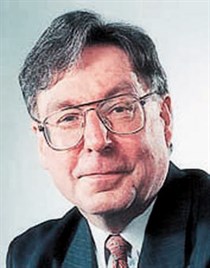 Peer review: Alf Roberts
Peer review: Alf Roberts
Former chief executive of the Institution of Engineering & Technology
The principal subject of this article is the European Train Control System (ETCS), a concept specified in outline as long ago as 1996, but on which no progress has been made. The radical proposal is to therefore advance the timescale for significant progress from 2038 to 2029! This to be part of a much broader vision of the ‘Digital Railway’.
There are two potential problems. The article recognises that a key managerial challenge is the optimisation of business processes and the role new technology can play in this, rather than introducing technology because it’s there or (worse still) because it’s hard.
The more specific and well-defined the project is before you start, the greater the chance of success. It seems to me that at this stage ETCS can be sufficiently well defined while the ‘Digital Railway’ cannot, so I would be concerned about making the former contingent on the latter.
Even ETCS will require consensus between the train operators and Network Rail on a wide range of operational and technical issues, with decisions having to be made on the basis of persuasion rather than executive edict. On past experience, this will inevitably put the time line at risk.
Which brings me to the second problem - potential incompatibility between the rate of technological develop-ment and the timescale for implementation.
Future-proofing will need to be a key element in the risk management strategy for the project. Of course, there is the advantage that the proposed technology is now central to many other sectors who will have (along with suppliers) a vested interest in the future-proofing issue. Nevertheless, few sectors other than energy tend to think, let alone plan, on 15/20-year time horizons.
Concentrating now specifically on the concept of ETCS. In principle, it must be a ‘no brainer’ to move from the manual ‘stop-go’ approach of controlling the network (using outdated electro/mechanical equipment) to one based on digital technology that will allow the optimisation of the operation of the network against a much wider range of parameters than just safety, although that will clearly remain paramount.
As the article says, this is not a resignalling project, but a radical revision of how the second-by-second running of the railway is managed. However, based on the article, the business case still seems to be a work in progress. The project will stretch all NR’s resources, and probably displace or defer other projects.
Given NR history and current challenges I am sure, therefore, that the NR Board will wish to see:
- A robust financial appraisal route-by-route as well as on a network basis, to confirm that the additional capacity will emerge and to establish the optimum rollout programme.
- An evaluation of the implications for the day-to-day operation of the railway.
- A convincing risk management plan particularly related to elements that either lie outside NR’s direct control (TOCs, HMG, for example) or are potential sources of internal priority clashes.
The article leaves me thinking that NR is a long way away from this at the moment - perhaps another reason for tight control of mission creep at this stage.
Not only does the article raise concerns about NR having enough skilled staff to implement the project, it also questions the capability of the traditional signal suppliers to meet NR’s timeline. The technology to be used is neither new nor particularly high-tech, but it is ubiquitous. Given this, apart from the future-proofing, the technical risk associated with the project seems to me to be low.
And even the future-proofing is controllable, provided excessive bespoking is avoided. Software updates are relatively straightforward, as are hardware ones provided you are using general purpose equipment. It seems to me, therefore, that two birds can be killed with one stone here, if NR looks beyond its traditional suppliers to implement this project. The involvement of the TOCs in the project is barely acknowledged - and yet it could be crucial. Replacing the traditional role of the driver as the sole ‘controller’ with a partnership between man and machine may give rise to a plethora of technical and staff relations issues.
Some TOCs have already experimented with the use of on-board computer-based driver “advisory” systems, to help drivers to minimise fuel consumption while maintaining the timetable. The lack of a co-ordinated approach to this (despite a national working group) may point to problems ahead for ETCS, as may the fact that issues with the trade union have led to the system being ‘advisory’, despite the very significant savings these systems have been demonstrated to offer.











